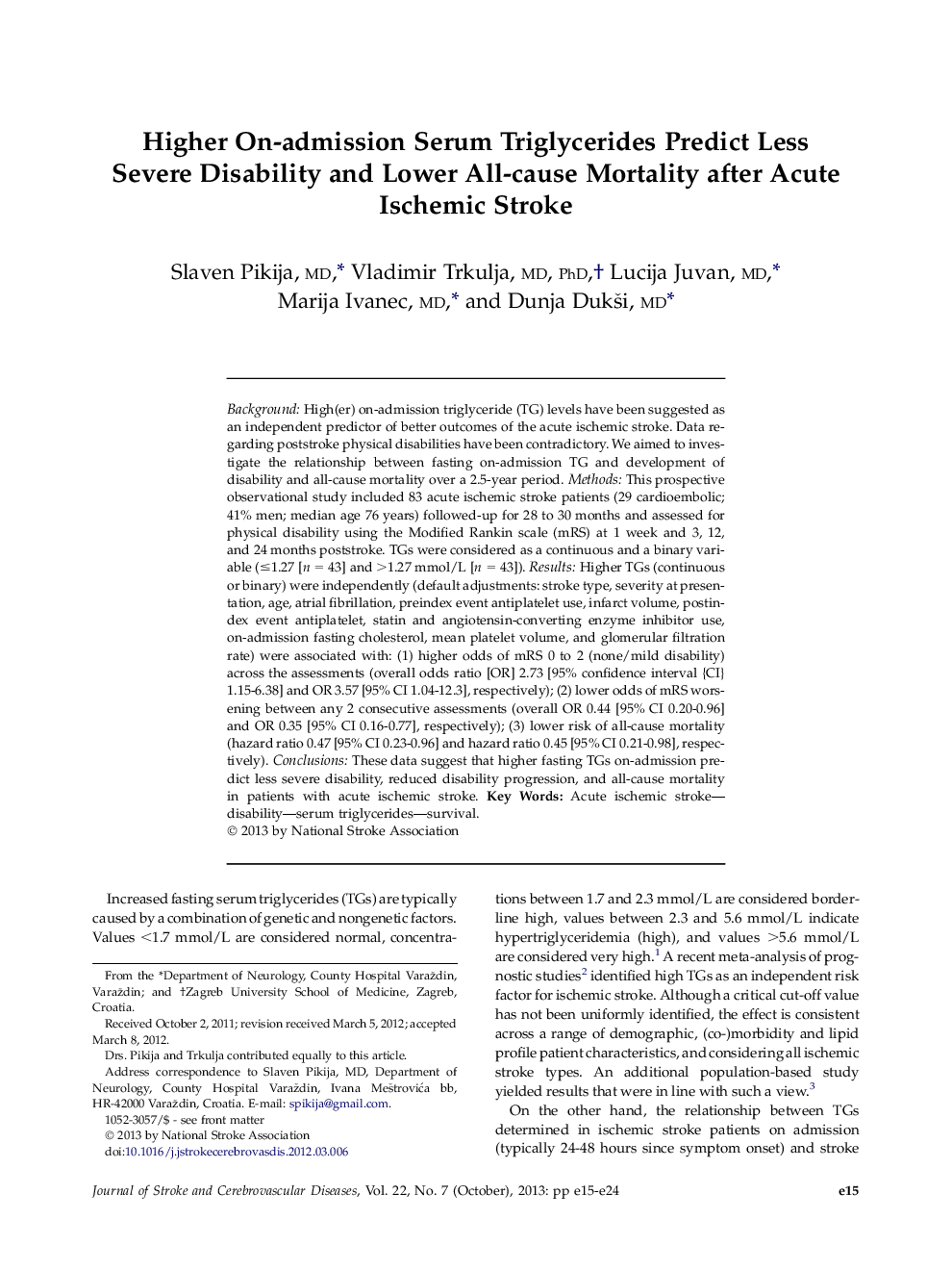| کد مقاله | کد نشریه | سال انتشار | مقاله انگلیسی | نسخه تمام متن |
|---|---|---|---|---|
| 5874467 | 1144802 | 2013 | 10 صفحه PDF | دانلود رایگان |
BackgroundHigh(er) on-admission triglyceride (TG) levels have been suggested as an independent predictor of better outcomes of the acute ischemic stroke. Data regarding poststroke physical disabilities have been contradictory. We aimed to investigate the relationship between fasting on-admission TG and development of disability and all-cause mortality over a 2.5-year period.MethodsThis prospective observational study included 83 acute ischemic stroke patients (29 cardioembolic; 41% men; median age 76 years) followed-up for 28 to 30 months and assessed for physical disability using the Modified Rankin scale (mRS) at 1 week and 3, 12, and 24 months poststroke. TGs were considered as a continuous and a binary variable (â¤1.27 [n = 43] and >1.27 mmol/L [n = 43]).ResultsHigher TGs (continuous or binary) were independently (default adjustments: stroke type, severity at presentation, age, atrial fibrillation, preindex event antiplatelet use, infarct volume, postindex event antiplatelet, statin and angiotensin-converting enzyme inhibitor use, on-admission fasting cholesterol, mean platelet volume, and glomerular filtration rate) were associated with: (1) higher odds of mRS 0 to 2 (none/mild disability) across the assessments (overall odds ratio [OR] 2.73 [95% confidence interval {CI} 1.15-6.38] and OR 3.57 [95% CI 1.04-12.3], respectively); (2) lower odds of mRS worsening between any 2 consecutive assessments (overall OR 0.44 [95% CI 0.20-0.96] and OR 0.35 [95% CI 0.16-0.77], respectively); (3) lower risk of all-cause mortality (hazard ratio 0.47 [95% CI 0.23-0.96] and hazard ratio 0.45 [95% CI 0.21-0.98], respectively).ConclusionsThese data suggest that higher fasting TGs on-admission predict less severe disability, reduced disability progression, and all-cause mortality in patients with acute ischemic stroke.
Journal: Journal of Stroke and Cerebrovascular Diseases - Volume 22, Issue 7, October 2013, Pages e15-e24
